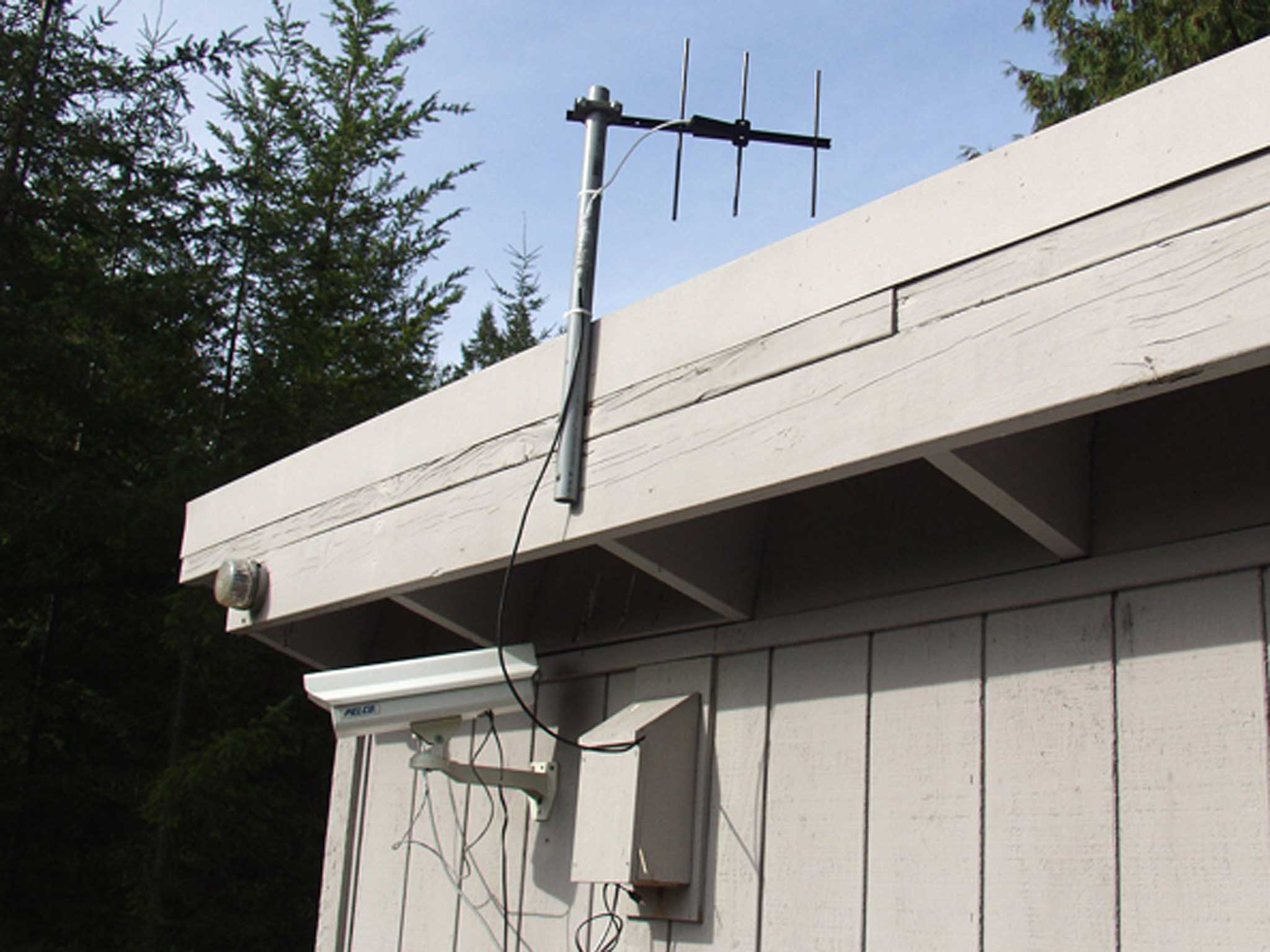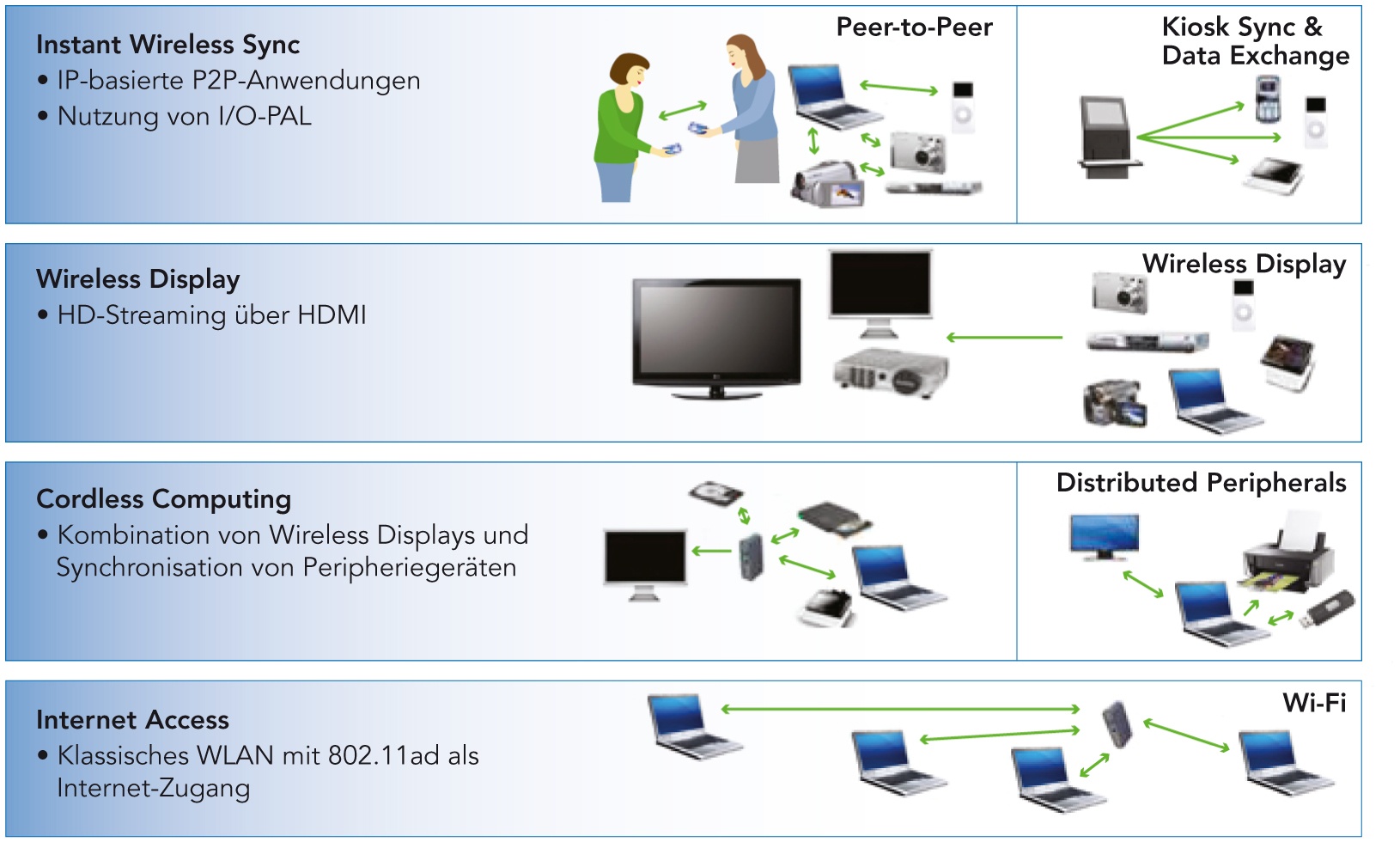802.11ad (WiGig) - Range and Utility

Amid the announcement of QCA (QuallcomAtheros - one of the leaders in Wi-Fi chipsets) about the purchase of Wilocity (one of the developers of WiGiG chipsets), a wave of enthusiasm for 802.11ad arose. In particular, the idea arose to build a surveillance system on 802.11ad - after all, with 7Gbps bandwidth, you can shoot high-resolution video from a large number of cameras! I decided to take a quick
look at how realistic this is: Let's look at RF:
- According to the Wiki , the minimum signal level for 802.11ad to work at the minimum speed ( 385Mbps PHY per second! ) Is -68dBm .
- According to this article (a good article on 802.11ad, by the way ), the maximum transmitter power of 802.11ad is 10dBm . This, by the way, is 10 times less than in Wi-Fi.
- The loss in the propagation of the FSPL signal at only 10m for 60GHz ( in which 802.11ad works ) is 88dB ( calculated on one of the many FSPL calculators ). Plus, there are still additional losses due to resonance with oxygen molecules , but let's omit this, this resonance is important at distances of 100m or more.
Having constructed a simple formula for the channel power budget, we get that for 802.11ad to work at a minimum speed at a distance of 10m, we need a channel gain of about 10dB .
Details and matan:
- Budget: TXpower + TX / Rxgains - FSPL> = Rxmin . ( excluding additional losses )
- For our case: 10dBm + Gains - 88dB> = -68dBm
- We get Gains> = 88-68-10 = 10dB
Where does this 10dB come from? Either from antenna amplification, or from beamforming, which marketers from 802.11ac and 802.11ad so joyfully paint. However, the antennas of mobile devices are usually characterized by negative gain, so we have nothing to catch here. Beamforming ( as shown by 802.11ac results ) can produce 3-5dB on top. Those. 5-7dB remains on the transmitting antenna of the access point .
Finding an antenna on 5dBi is not a problem, even omnidirectional ( but the usefulness of directional antennas on a point, you know, is limited ). But only with such an antenna the opening angle in the vertical plane will be about 15 degrees, which is very small and very inconvenient.
So, already at a distance of 10m, the operation of 802.11ad is problematic .
Can I use it to stream video? Yes!
- Stream video from a laptop to an external monitor or projector at a distance of 2-3m.
- Stream video from tablet to TV without cables or adapters
- Stream video files to external storage for backup
Stream video from a surveillance camera? Well, if the camera-to-point <10m and accurately you can not throw the wire ... :) The second option would be a directional antenna on the camera with a large gain ( claimed compact directional antennas for 60GHz with KU 12-18dBi ) - life (and oxygen) will show how it is practical.

On the other hand, such a short range is a real boon for the home user: the neighbor behind the wall will finally stop "clogging my Wi-Fi with his Wi-Fi." Likewise, corporate WLAN admins will have a chance to see how the whole BYODshift gets out of the already loaded 2.4 GHz band (and at the same time, it doesn’t clog 5 GHz so fast ), which is also good.
In general, as the bourgeois say: "Right tools for the right job" (the picture is clickable ). As you can see from the picture, 802.11ad never thought of for "long-range" applications, so in fact we did not make any discoveries. However, there will always be enthusiasts trying to use the technology for other purposes. I hope this post helps you in communicating with them.
What do you think about 802.11ad? The original is here .

